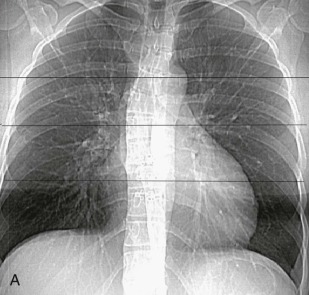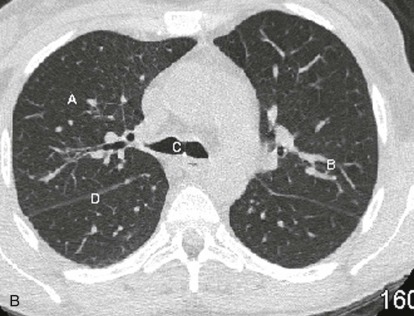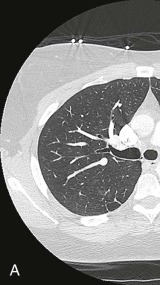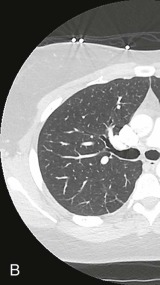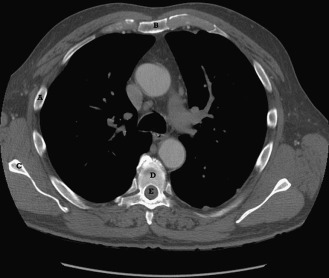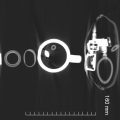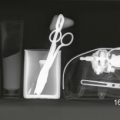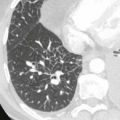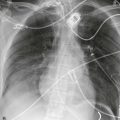A chest x-ray is a two-dimensional summation image. We spend time synthesizing the superimposed anatomy on the posteroanterior and lateral into a three-dimensional understanding. Computed tomography (CT) is the opposite task. The anatomy is not superimposed. We have to integrate the axial images mentally to get the overall picture. Your knowledge of the radiographic anatomy will help you understand CT scans. Conversely, CT anatomy will help you better understand radiographic anatomy. First, we need to master the CT anatomy and then develop ways to integrate the information.
Every CT scan starts with a scout view, a projection image that looks like a second-rate x-ray. As you scroll through the axial images on a monitor, a line on the scout view tells you the level you are looking at. The line in Figure 4-1A shows that the axial images ( Figures 4-1D and 4-1E ) were done at the level of the aortic arch.
|
|
|
|
| |
|
| |
|
| |
|
| |
| The three lines indicate the scan locations of Figures 4-2B, 4-2C, and 4-2D . Test yourself by identifying the following: |
| |
|
| |
|
| |
| The pleura and pericardium also are seen on the mediastinal windows in Figure 4-2D . The pleura is seen as a very thin white line lining the thoracic cavity ( posterior arrow ). The pericardium sits between two layers of fat as it encircles the heart ( anterior arrow ). Normally, there is no visible fluid in the pleural space, but there may be some fluid in the pericardial space. | ||
|
| |
|
| |
| The symmetrical thin white lines from the hilum ( Figure 4-3A ) are the major fissures. They are formed by the visual pleura covering each lobe. | ||
|
| |
|
| |
|
| |
|
| |
|
| |
|
| |
| High-resolution CT: To maximize lung detail for evaluating fine interstitial lung disease, we use two strategies: We take thinner sections (1-1.25 mm instead of 2.5 or 5 mm), so there is less overlap with adjacent tissue (i.e., less volumes averaging), and we use CT image reconstruction algorithms that sharpen edges. | ||
|
| |
|
| |
| The image is reconstructed with an algorithm that sharpens edges. Figure 4-4B is 2.5 mm thick and a standard reconstruction algorithm. Note the difference in detail. | ||
|
| |
|
| |
| ||
